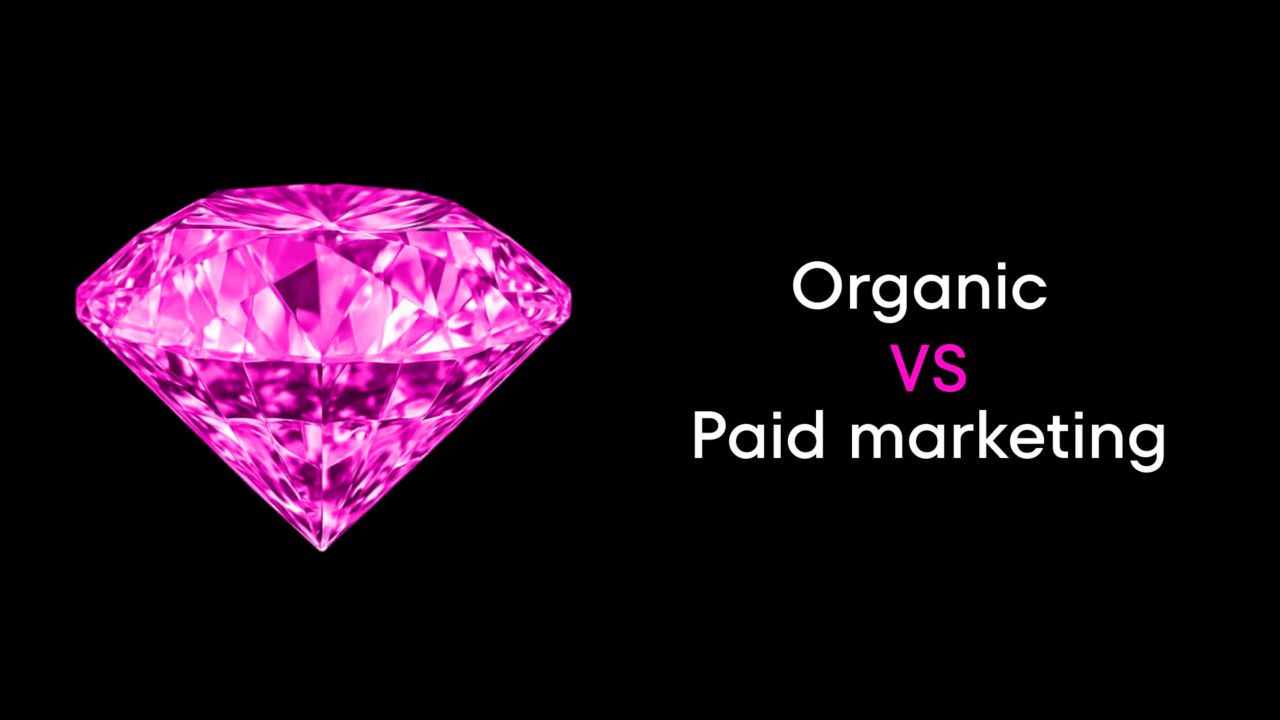Marketing for small businesses is often driven more by tactics than by long-term strategy. Founders and early employees usually rely on tools where personal effort and resourcefulness matter most. To clarify the choices entrepreneurs face, we gathered 10 of the most common questions small business owners ask when deciding between organic and paid marketing.
1. How many resources and how much time are needed for a company to start getting clients from organic traffic?
Organic traffic is always a long and difficult journey. Think of it as cultivating a plant: it requires care, light, soil, and water over a long period. Typically, it takes 6–9 months before meaningful results appear.
It is important to remember that organic traffic is neither free nor cheap. It requires SEO work, content production, media placements, and usually the involvement of specialists. Many businesses start with an “organic-first” strategy but fail to sustain the effort because of the resource intensity.
The challenge is growing even sharper as search engines integrate AI-generated answers and allocate more space to paid placements.
Our recommendation: assess whether you can allocate a dedicated person to oversee SEO, designers, and copywriters. Estimate the costs and multiply them by 12. If your budget can withstand that, then treat it as a long-term investment and commit fully.
2. Which paid channel works best for small businesses?
The answer should begin with an audit of your company and competitors. Our Communication Compass framework helps select channels more effectively, ensuring budget efficiency.
For small businesses, focus is key. Concentrating on a single channel at the start allows budget optimization and gives algorithms time to learn your product and audience. Almost every channel contains your customers—it is a matter of patience and structured testing.
3. Which is better: organic or paid marketing?
For most businesses, organic traffic is a luxury. Paid tools are essential for growth, especially in the early stages. Brand building, by contrast, is always a long-term effort.
For small businesses, the priority should be creating the right funnel—so that monthly advertising spend drives consistent growth. Once stability is achieved, brand-building and community creation can follow.
4. Where is money most often lost in paid marketing?
From our experience, losses usually occur when founders abandon the testing phase too early or resist experimentation. Take Amazon product listings as an example: descriptions, photos, timing, and ad placements can all vary widely. Only through experiments can the right formula emerge.
Another frequent issue is misalignment and lack of trust. Ad approvals can stall if founders are unwilling to take risks or give their agency full freedom. Prolonged negotiations consume time and hurt momentum — something small businesses can rarely afford.
5. Should businesses combine organic and paid marketing?
Yes — 100%. This dual approach requires significant investment, but it also acts as insurance. If funds for paid campaigns dry up, organic presence can keep the business afloat temporarily. We have seen many founders survive crises thanks to organic traffic serving as a lifeline.
6. For which businesses are social media the right paid channel?
Most often, for products and recurring services. Products are straightforward: define the audience, set the price, and test offers.
Services should be divided into two groups:
- Recurring (e.g., haircuts, manicures, kids’ playrooms, rental spaces). These can be marketed much like products.
- One-off (e.g., consulting, design projects, architecture). For these, CPC ads are more effective because they capture intent in the moment.
7. How important is brand identity?
It matters, but at the beginning, positioning and message clarity outweigh design. Your unique value proposition and tone of voice are far more critical than perfect visuals.
That said, every small business needs at least the basics: a logo, brand elements, fonts, colors, and ready-to-use templates for quick creative production (no more than 20 minutes per asset).
8. Which paid traffic channels should a small business prioritize?
Start with Google Ads. It may sound obvious, but it remains highly effective. Next, consider media placements. Sometimes, even one or two well-placed articles generate a steady flow of new customers.
Finally, segmented social media advertising is a strong option, allowing highly targeted campaigns with clear ROI.
9. What is the right budget for paid marketing each month?
Expect to invest thousands of dollars. A budget of $50 will not bring results. According to Intuit SMB MediaLabs, small businesses spend $78,000 annually on marketing. SociallyBuzz estimates monthly spend between $2,500 and $12,000.
As a rule of thumb, plan for 6 – 8% of your revenue to go into marketing.
10. When should a small business hire an agency?
At the very beginning—for strategy development and channel selection. Later, a fractional or outsourced marketer is often the most efficient option. This hybrid model allows small businesses to grow sustainably without overextending resources.


